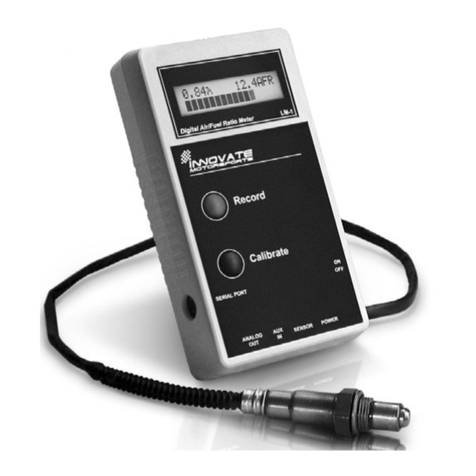
October 19, 2020 Page 5 of 18
2 P
RINCIPLE OF
O
PERATION
The analyzer draws a slip sample of exhaust gas using an internal pump. The sample gas is
passed through infrared optics and also across chemical sensors. This combination of detection
methods is used to determine the gas concentration of various exhaust gases.
There are two distinct detection methods for exhaust gas analysis: non-dispersive infrared (NDIR)
for CO, CO
2
, and hydrocarbons, and chemical sensors for O
2
and NO
x
. NDIR technology is used to
measure the concentration of a gas by determining how much infrared energy is absorbed at a
select wavelength band that corresponds to a resonant mode spectrum of the molecule being
analyzed. For example, the CO
2
molecule has a strong resonance at a frequency relating to the
4.26 micron near infrared wavelength. Therefore, CO
2
will strongly absorb infrared energy at this
select wavelength. The more CO
2
molecules there are in the optical path, the more energy gets
absorbed. The gas analyzer determines how much energy is absorbed at a specific molecular
resonance of a particular gas and then relates this absorption to gas concentration. In general, it is
the technique of choice for measuring common exhaust gases as this technology is cost effective,
robust, stable, well proven, and by far the most popular method for measuring these gases.
Periodically, the analyzer will sample common air. This is required in order to reset the reference
gas values on the analyzer. This process is called “Zeroing” the analyzer. The analyzer has a
separate intake port and internal solenoids used for the Zero process.
3 O
PERATING
A
NALYZER
3.1 Installation and Setup
Before assembling and using your analyzer for the first time, you may want to read ahead and
familiarize yourself with the front panel displays and controls.
1.
Remove the analyzer from the storage case.
2.
Remove the probe and sample line assemblies from the storage case.
3.
Attach one or both sections of the black sample line to the water trap/separator of the probe,
and the other end to the white 25mm diameter filter on the handle of the analyzer.
4.
Turn the power switch on. The analyzer will ‘lamp test’ the gas
displays, momentarily run the pump and then enable the display with
dashes as shown to the right. This is telling you that the analyzer is
ready for operation, and that Hexane (C6) is the selected HC for the
fuel used.
5.
Only at this time (the power-up screen) can the fuel selection be
changed.
6.
To do so, momentarily push the NOx/OPT button.
7.
The HC display will begin to flash.
8.
Select the fuel you wish to use (Gasoline = Hexane – C6, LPG = Propane – C3, CNG =
Methane – C1) by the UP or DOWN arrow.
9.
To save the fuel selection, push the NOx/OPT button again. The HC display will stop flashing,
and will show the selected fuel.
10.
NOTE: The fuel selection is saved in power safe memory. On the next power-up, the last fuel
selected during the previous operation is active. This means the analyzer fuel mode can be set
and retained for future use, and does not have to be set each time the analyzer is powered up.
11.
Press the ZERO button to start operation. For information on how a zero is performed, see
“Zero,” see the Zero Calibration section.





























